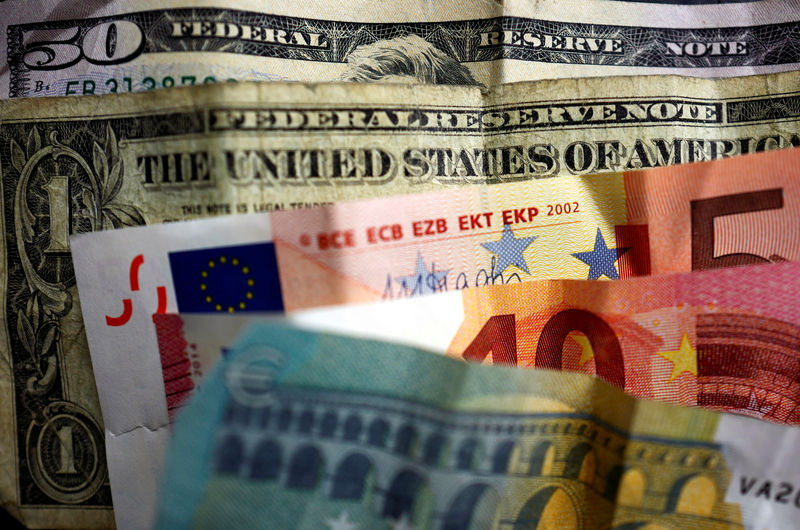Investing.com - The U.S. dollar edged higher Wednesday, while the euro fell after the release of disappointing eurozone activity data pointed to further ECB rate cuts ahead.
At 05:25 ET (09:25 GMT), the Dollar Index, which tracks the greenback against a basket of six other currencies, rose 0.1% to 104.232, extending an overnight rebound.
Dollar looks to political uncertainty
The dollar has benefited from the volatility surrounding the U.S. political situation.
Vice President Kamala Harris was seen garnering strong support from the Democratic Party after her endorsement as its presidential nominee by President Joe Biden. A Reuters/Ipsos poll also showed her slightly ahead of Republican nominee Donald Trump.
That said, Trump remains the favorite to win November’s presidential election.
“The dollar losses from the softer June CPI report have now been erased in most USD crosses, with JPY, CHF and GBP standing out as a few key winners,” said analysts at ING, in a note.
“Looking at the bottom of the FX scorecard, we sense the Trump trade is still very much at play.”
That said, Friday sees the release of U.S. personal consumption expenditure inflation figures for June, and the Fed’s preferred gauge of inflation could change foreign exchange sentiment quickly.
Euro lower after weak activity data
In Europe, EUR/USD fell 0.2% to 1.0835, following the release of eurozone business activity data for July.
Growth in eurozone business activity stalled in July, with the HCOB's preliminary composite Purchasing Managers' Index dropped to 50.1 this month from June's 50.9, barely above the 50 mark that separates growth from contraction.
The European Central Bank kept interest rates on hold at 3.75% last week, but further signs of slowing regional growth point to further rate cuts this year.
Markets are pricing in almost two ECB rate cuts for the rest of the year.
GBP/USD traded 0.1% lower at 1.2898, falling back from the 1.30 level that the pair saw last week for the first time in a year.
Data showed that British business activity picked up this month, bolstered by the fastest manufacturing growth in two years and the strongest inflow of new orders since April 2023.
July's S&P Global (NYSE:SPGI) Flash Composite Purchasing Managers' Index rose to 52.7 from June's six-month low of 52.3.
Elsewhere, USD/CAD rose 0.1% to 1.3796, near a three-month low for the Canadian dollar ahead of a Bank of Canada rate-setting meeting later in the session.
Markets are pricing in an 84% chance of a 25 basis point rate cut, which would be the BoC's second cut in as many months.
Yen goes from strength to strength
In Asia, USD/JPY fell 0.5% to 154.81, with the pair falling to its lowest level since early June.
The yen’s gains came as an extension of a recovery from last week, where the currency strengthened sharply amid suspected currency market intervention by the government.
Some positive purchasing managers index data also benefited the yen, as an unexpected contraction in manufacturing activity was largely offset by a rebound in services activity.
Focus is now squarely on a Bank of Japan meeting next week, with recent inflation and PMI readings sparking increased speculation the central bank will raise interest rates by 10 basis points.
USD/CNY edged higher to 7.2773, close to highs last seen in November, as sentiment towards China remained dour amid persistent concerns over slowing economic growth in the country.
